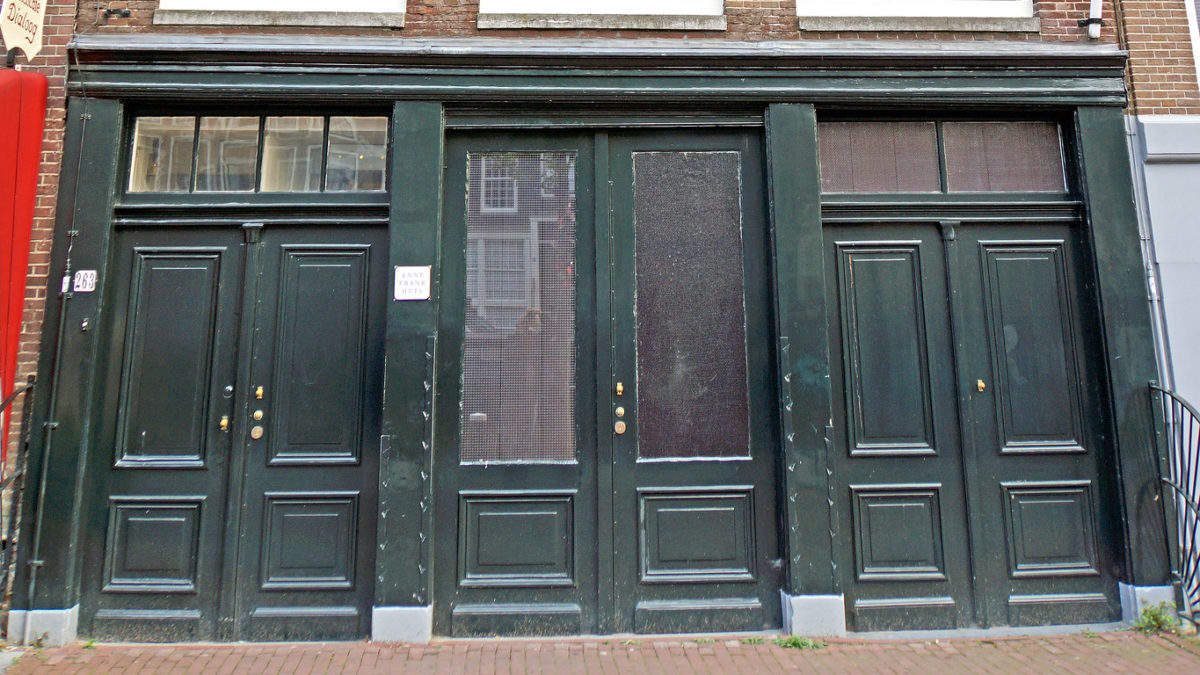
A lingering and frustrating mystery about Anne Frank is who betrayed her family to the Gestapo. That is the thrust of Rosemary Sullivan’s excellent book, “The Betrayal of Anne Frank: A Cold Case Investigation.” The book is the result of a six-year investigation led by a former FBI agent and a 23-member team of investigators who obtained documents from 29 archives and employed modern-day police techniques such as forensics and criminal profiling.
Frank was a German-Dutch girl who remarkably hid in a concealed room for 25 months, from 1942 to 1944, with her family during the Nazi occupation of the Netherlands in World War II.
Concentration camp survivor Primo Levi knew what he was talking about when he chose Frank as a symbol of the wickedness of the Holocaust:
One single Anne Frank moves us more than the countless others who suffered just as she did but whose faces have remained in the shadows. Perhaps it is better that way; if we were capable of taking in all the suffering of these people, we would not be able to live.
Much is known about Frank thanks to her 1947 posthumously published diary, in which she recorded daily events during the period her family hid from the Gestapo that patrolled outside their dwelling. We know her birthdate, the names of her family members, even which parent she favored (her father). We know the exact date of her arrest by the Gestapo (August 4, 1944) and the concentration camps she was deported to (Auschwitz and then Bergen Belsen). We even have a reasonable estimate of when she died (February 1945) and of what (typhus).
That she died from a disease and not from a bullet or from inhaling Zyklon B doesn’t detract from the horror of her death at 15. Photos of her from as late as 1942, mere weeks before she and her family hid in a room behind a bookcase in the building her father Otto worked in, show a happy, well-adjusted girl with a winning smile.
After less than a year in a concentration camp she was, according to an eyewitness, “bald, emaciated and shivering.” This happy girl went from sharing a secret room with her family to sharing a concentration camp infirmary full of rats and in complete darkness with her sister. Even more excruciating is that Frank died mere weeks before the British liberated her camp.
Revelation of New Book
The research in Sullivan’s book is impressive and convincing. But the subtitle of the book, “A Cold Case Investigation,” is misleading, for the case may never have been that cold.
Early on, the book makes apparent that some people knew the identity of the person who betrayed Frank’s family to the Nazis. There is a strong possibility that Frank’s own father, Otto, the only family member to have survived the Holocaust, knew.
One is even given a rough chronology as to when he gained this knowledge. As shown by Sullivan and the research team, Otto went from feverish cooperation with the official police investigation in 1948 to indifference by the time the next official investigation in 1963 was conducted.
Otto may have supplied the reason when he told journalist Friso Endt that the family’s betrayer was Jewish. One could gather from this that either Otto was trying to protect a fellow Jew and keep what happened to his family focused on the Nazis or that he knew and forgave the betrayer because the latter faced the monstrous decision of protecting his own family by giving up others.
The most remarkable piece of evidence unearthed for the first time by the researchers was their discovery of an anonymous typed copy of a note sent to Frank’s father identifying the betrayer as a Jewish notary named Arnold van den Bergh. Miep Gies, who helped get the Frank family into the secret room in 1942, may have known about Van den Bergh as well when she hinted during a 1994 lecture that the betrayer was Jewish.
From there, the team provides strong circumstantial evidence about Van den Bergh betraying the Franks and why. As the notary of a Jewish council established by the Nazis in Amsterdam, he had access to all of the Jewish hiding places in the city; and the fact that he and his Jewish daughter were never put on the trains to the concentration camps strongly suggests the Franks and others were sacrificed instead.
One of the nagging questions put to subsequent generations about life under the Nazis is what they would have done in the same circumstances. For those quick to condemn Van den Bergh for handing a teenage girl over to the Gestapo and the girl’s father for not outing the betrayer because of some kind of Jewish loyalty, one should recognize the unique evil of the Holocaust.









